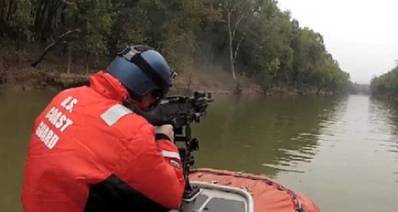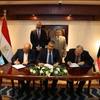Coast Guard Fires at Fort Knox, Well Almost
The Riverine Range at Fort Knox became the mounted automatic weapons training facility for the Coast Guard 9th District in preference to an earlier site in the Great Lakes, and it has become crucial to the mission readiness of mounted automatic weapons carriage training requirements.
A chill breeze blew through the Kentucky hills as the last rays of sunlight cast their golden rays over the Fort Knox small arms range and faded into darkness.
The landscape stood silent other than the occasional coyote sniffing through the underbrush or the hoot of an owl on a far away ridge.
The chatter of machine guns and the angry red glow of tracer rounds finding their targets downrange suddenly broke the serene silence. It was time to train.
In the spring of 2007, after considering several possible alternatives to live fire training on the pristine Great Lakes, the Riverine Range at Fort Knox became the mounted automatic weapons training facility for the Coast Guard 9th District, and has been crucial to the mission readiness of the stations with mounted automatic weapons carriage requirements.
Assembling the right group of people to make up the training staff is no easy task. The challenge of developing the program and assembling the training staff fell to the 9th District’s Enforcement Branch and subject matter expert, Master Chief Petty Officer Patrick O’Kelly.
O’Kelly led this year's training team, which consisted of 18 Coast Guardsmen from around the district. The team was drawn from active-duty units, as well as the Coast Guard Reserve and Auxiliary. The team is responsible for training, on average, 220 tactical coxswains and crew members over the course of two months every year.
From an article by Petty Officer 3rd Class Christopher M. Yaw
, Coast Guard 9th District External Affairs Division













